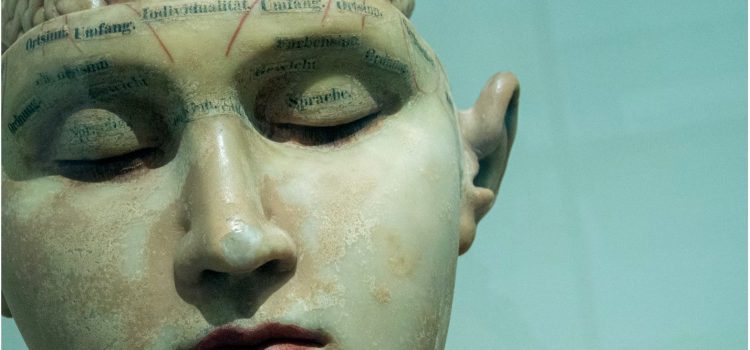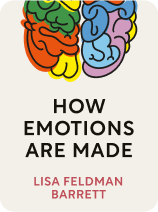

This article is an excerpt from the Shortform book guide to "How Emotions Are Made" by Lisa Feldman Barrett. Shortform has the world's best summaries and analyses of books you should be reading.
Like this article? Sign up for a free trial here.
Looking for an overview of Lisa Feldman Barrett’s book How Emotions Are Made? What are Barrett’s key takeaways about emotions in psychology?
In her book, How Emotions Are Made, Lisa Feldman Barrett challenges the status quo relating to our psychological understanding of emotions. Barrett’s concepts of emotion, while controversial, give new insight into how emotions are made in the brain—and her answers might surprise you.
Keep reading for an overview of the key concepts in How Emotions Are Made by Lisa Feldman Barrett.
Lisa Feldman Barrett’s How Emotions Are Made
In How Emotions Are Made, neuroscientist and psychologist Lisa Feldman Barrett challenges many of society’s long-standing beliefs about emotions, calling into question everything from what emotions are, to where they come from and how to control them.
Lisa Feldman Barrett introduces a new theory of emotion in How Emotions Are Made, based on years of research, which posits that emotions are neither hardwired into our brains nor universally felt and recognized; rather, emotions help the brain to predict what will happen next based on what’s happened in the past—and to plan accordingly. Barrett calls this the theory of constructed emotion. As she sums it up in her TED talk, “Emotions don’t happen to you; they’re made by you.”
Barrett is a University Distinguished Professor of Psychology at Northeastern University. She also holds appointments at Harvard Medical School and Massachusetts General Hospital, where she is Chief Science Officer for the Center for Law, Brain & Behavior. In addition, Barrett is a director of the Interdisciplinary Affective Science Laboratory, which studies emotions and produced some of the research on which the book is based.
How Emotions Are Made was published in 2017 and widely covered in the popular press for Lisa Feldman Barrett’s novel theory of emotion. For all its novelty, however, Barrett’s theory of constructed emotion entered a very crowded and contentious field: Joseph LeDoux, a neuroscientist whose own theory of emotion agrees in part with Barrett’s, has noted that there are as many theories of emotion as there are emotion theorists. Scientists have a hard time agreeing on the fundamental question of how to define emotion. Barrett’s theory in How Emotions Are Made is one response to that question.
Barrett’s Concepts of Emotion
In How Emotions Are Made, Lisa Feldman Barrett examines each element that the brain uses to make emotions (past experiences grouped together as “emotion concepts,” internal sensory input, and external sensory input), then puts them all together in a blueprint that explains how emotions are made. Barrett’s work in the field of emotions shows the following:
- Emotions aren’t scientifically measurable; they’re mental concepts.
- Emotions aren’t universal across cultures.
- Feelings and emotions are not the same thing.
- Emotions are not reactions; they’re predictions.
- Emotions are not innate; they’re constructed.
- Emotion and illness are not as unrelated as they seem.
- Your emotions do not absolve you of responsibility for your actions.
| How Novel Is the Theory of Constructed Emotion? As Barrett herself recognizes, her theory of constructed emotion is controversial because it directly challenges the status quo. Barrett’s theory is indeed novel as a neuroscientific explanation of how the brain makes emotion out of cultural concepts. But when it comes to the psychological implications of her theory, some aspects of Barrett’s research are consistent with more established beliefs about emotion. For example, psychologist Daniel Goleman’s Emotional Intelligence, one of the most widely read books about emotion, asserts that there’s an area of the brain exclusively dedicated to emotions and that humans have two minds: a thinking one and a feeling one. In this sense, Emotional Intelligence expresses a more traditional theory of emotion that is directly at odds with Lisa Feldman Barrett’s theory of constructed emotion in How Emotions Are Made, which says that the entire brain is involved in the process of making emotions and that rational thoughts do not exist independent of feelings. Barrett and Goleman seem to agree, however, that past experiences associated with a particular emotion (which Goleman calls “emotional memories” and Barrett calls “emotion concepts”) largely determine the emotions someone experiences in the present. As a result, childhood experiences play a major role in an adult’s emotional well-being. Similarly, in The Body Keeps the Score, psychiatrist Bessel van der Kolk, like Goleman, states that the brain is divided into a reptilian brain, an emotional brain, and a rational brain. However, like Barrett, he also acknowledges that physical sensations in your body impact your emotions, and vice versa; in other words, your mind and body are inextricably connected. |

———End of Preview———
Like what you just read? Read the rest of the world's best book summary and analysis of Lisa Feldman Barrett's "How Emotions Are Made" at Shortform.
Here's what you'll find in our full How Emotions Are Made summary:
- A deep dive into what emotions really are and where they come from
- How some cultures have different emotions than others
- The difference between feelings and emotions






